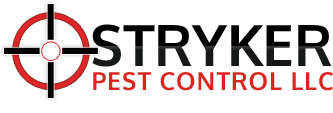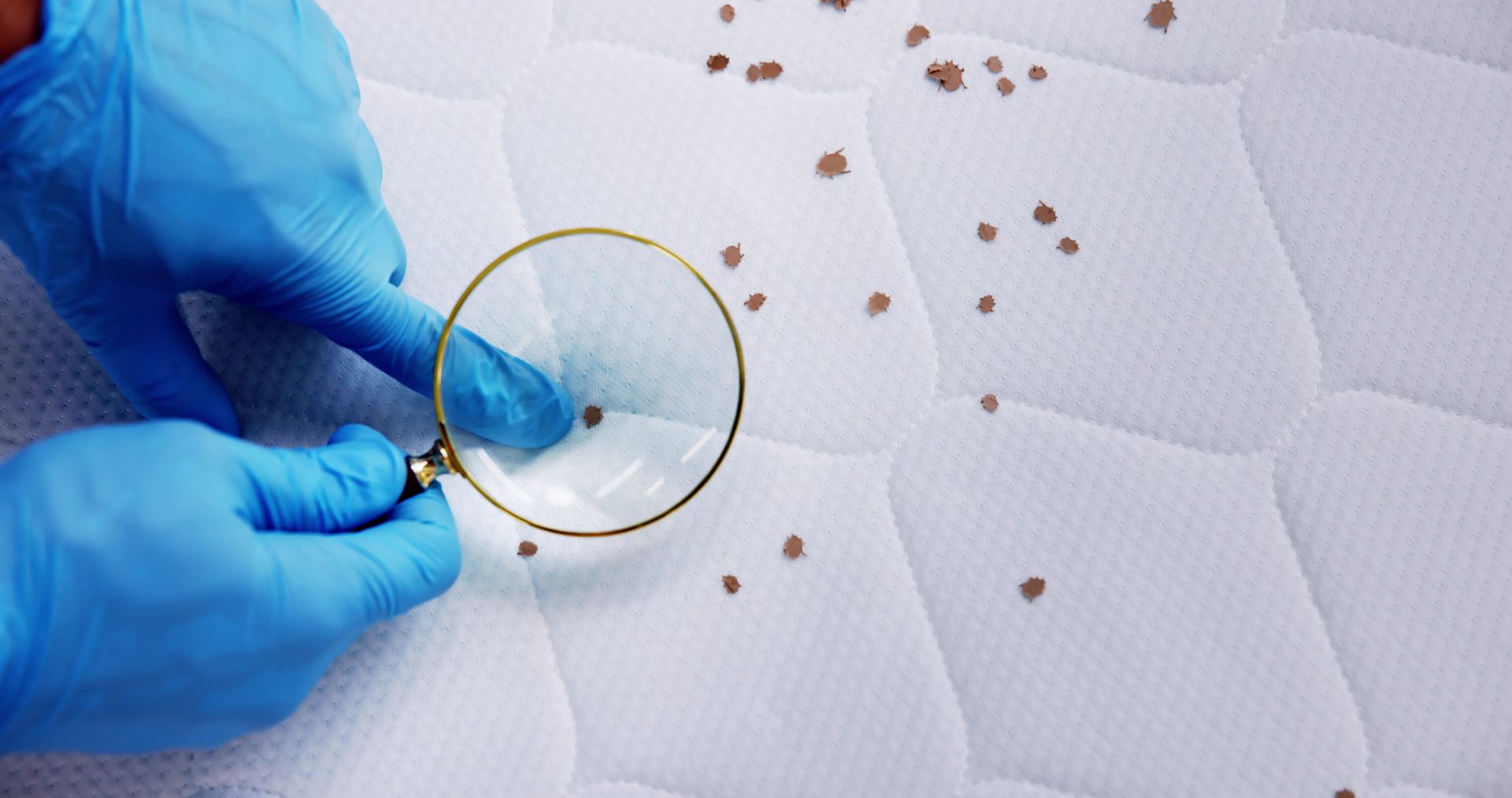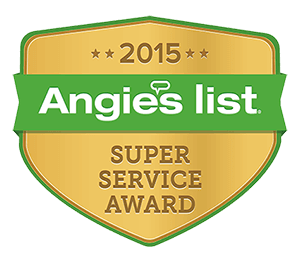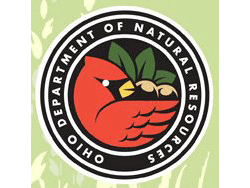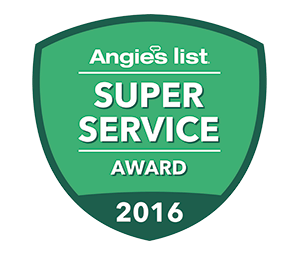How Much Should You Pay for a Pest Control Visit in Parkersburg, West Virginia?
Keeping a home or business pest-free in Parkersburg, WV is more than just a matter of comfort. It is about protecting health, property, and peace of mind. From ants in the kitchen to termites that threaten structural integrity, pests can cause costly damage and disrupt daily life if left untreated. That is why professional pest control services play such an important role for families and businesses throughout the Mid-Ohio Valley.
For many property owners, one of the first questions that comes up is “How much does pest control cost in Parkersburg, WV?” Understanding local pricing helps set realistic expectations, prevents surprises when the bill arrives, and makes it easier to compare options between different providers. Whether you are dealing with a one-time infestation or considering ongoing protection, knowing what to budget for pest control is a key part of maintaining a safe and healthy environment.
Of course, not every pest problem comes with the same price tag. Costs vary depending on several factors such as the type of pest involved, the size of the property, the severity of the infestation, and whether you need a one-time visit or ongoing service. In the sections ahead, we will break down the average pest control costs in Parkersburg, explore what influences pricing, and provide practical tips to help you get the most value from your investment.
Factors That Affect Pest Control Costs
When homeowners or businesses in Parkersburg ask about pest control pricing, the answer usually depends on several key factors. Understanding these variables can help explain why quotes differ from one situation to the next.
Type of Pest Problem
The type of pest you are dealing with is one of the most significant cost drivers. In Parkersburg, common issues include ants in kitchens, rodents in basements or garages, termites around wooden structures, and bed bugs in bedrooms. Each of these pests requires a different treatment approach, which directly affects cost.
- Ants and general insects: Typically resolved with standard perimeter sprays or baiting, making them less expensive to treat.
- Rodents: Require sealing entry points, placing traps or bait stations, and sometimes multiple follow-up visits. This often includes dealing with house mice, which are one of the most common rodents in West Virginia homes. While small, mice reproduce quickly, which means ignoring the problem can soon lead to more pests and higher treatment costs.
- Termites: Among the most costly pests to treat, as termite infestations can threaten the structural integrity of a home and often demand specialized products and monitoring systems. A termite problem left untreated can lead to thousands of dollars in damage.
- Bed bugs: Known for their persistence, bed bugs usually require multiple treatments, heat applications, and thorough inspections, which increase costs compared to other pests.
Size of the Property
The size of the home or business also plays a role. A small residential property can often be treated more quickly and with less material than a large commercial space or a multi-unit building. Bigger spaces require more labor, more product, and sometimes more than one technician to complete the job effectively. This is why pest control quotes often scale with square footage and layout complexity.
Type of Treatment
Not all pest control treatments are the same. Costs vary depending on the solution chosen:
- Standard chemical applications are common for ants, spiders, and many general pests.
- Baiting systems and traps are often used for rodents or certain insect species.
- Heat treatments are effective for bed bugs but come with a higher price tag due to the equipment and time required.
- Eco-friendly or low-toxicity solutions are increasingly popular for families and businesses concerned about safety, though they may involve more frequent applications.
- Preventive barrier treatments provide ongoing protection against common seasonal pests.
Choosing between a one-time treatment and a recurring service also impacts cost. A single application may solve a small problem, but a recurring service plan provides continuous protection, often saving money over time by preventing larger infestations.
Severity of Infestation
The extent of the infestation directly impacts the cost. A minor ant trail caught early can often be resolved in a single visit with straightforward treatment. On the other hand, a severe termite infestation that has already spread throughout a property requires extensive labor, repeated visits, and high-grade materials. Similarly, a light rodent problem in a garage is much less expensive to manage than a full-blown pest infestation in a commercial kitchen. The longer pests go unchecked, the higher the eventual treatment costs will be.
Frequency of Visits
Frequency of service also influences cost. Some property owners prefer a one-time visit to address a specific issue, while others choose monthly, bi-monthly, or quarterly plans to keep pests from returning. Although recurring service plans involve an ongoing budget, they often prove more cost-effective in the long run. Preventive maintenance can stop pests before they cause expensive damage, helping homeowners and businesses save money while protecting their investment.
Average Pest Control Costs in Parkersburg, WV
One-Time Visit Costs
For a general pest control visit, covering common household pests like ants, spiders, or rodents—prices in the Parkersburg area typically range from $115 to $265. Regional providers serving Virginia, Maryland, and West Virginia also report a one-time general pest treatment average of $150–$450.
National data shows average one-time visits fall within $250 to $400, especially for mild infestations. Though Parkersburg may skew toward the lower end of this range, local housing conditions and pest prevalence can still influence costs.
Recurring Service Costs
If ongoing protection is preferred, recurring service plans offer better long-term value. In the broader WV-market, quarterly plans typically cost $100–$300 per quarter, while organic-focused monthly plans come in at $80–$180 per month. On a national scale, average recurring costs break down to $40–$70 per month or $100–$300 per quarter, depending on coverage and pest types.
Specialized Treatments
Termite Control
- In Parkersburg specifically, termite treatments average $285–$416, though the overall range can extend from $89 to $873.
- Statewide, termite treatments, including warranties, range $400–$5,000, with liquid treatments or bait systems depending on inspection needs.
- This is especially relevant for older homes near the Ohio River, where higher moisture levels can make structures more vulnerable to a termite problem.
Bed Bug Extermination
- Nationwide, bed bug removal for an entire home typically costs $1,000–$4,000, with average services around $2,500 and high-end cases reaching $6,200.
- Specific room-based breakdowns estimate $200–$400 per room, with entire-home treatments ranging more widely based on the method used.
- Another source confirms the national average for whole-home bed bug extermination is between $1,500–$5,000.
Emergency and Same-Day Services
Same-day or emergency treatments typically involve a surcharge. Across the industry, emergency fees can add anywhere from $50 to $200+, depending on urgency and access needs.
Summary Table
| Service Type | Typical Cost (Parkersburg) |
|---|---|
| One-Time General Visit | $115–$265 (up to $450 regionally) |
| Recurring Quarterly Plan | $100–$300 per quarter |
| Monthly Organic Plan | $80–$180 per month |
| Termite Treatment | $285–$416 average ($89–$873 range) |
| Bed Bug Extermination | $1,000–$4,000 average (up to $6,200) |
| Emergency/Same-Day Service | Often +$50–$200 surcharge |
Comparing Local Pest Control Companies
Choosing a pest control provider in Parkersburg is not only about the price. It is about making sure you are getting reliable service, effective results, and long-term protection for your home or business. Taking the time to compare companies can save you money in the short term and prevent costly problems down the road.
Tips for Researching Providers
Start by looking for companies with a strong reputation in the local community. Check their websites to learn about their services, programs, and customer guarantees. Reading online reviews from Parkersburg homeowners can give you a good sense of how responsive and effective a company is when dealing with real-world infestations. A provider that is transparent about their process, pricing, and treatment methods is usually a good sign of professionalism.
Importance of Reviews and Credentials
Pest control is a trust-based service, so credentials matter. Make sure any provider you consider is licensed and insured. Look for indicators of quality such as Better Business Bureau ratings, professional memberships, or customer testimonials.
Reviews from Parkersburg residents can give you confidence that the company understands the unique pest challenges in the area and delivers dependable results. Many homeowners find peace of mind knowing they are working with a company that combines professional credentials with community roots.
Key Questions to Ask When Getting Quotes
Before committing to a service plan, it is smart to ask a few direct questions:
- What does the quoted price include? Confirm whether inspections, follow-up visits, or preventive measures are part of the cost.
- Are there warranties or guarantees? A trustworthy company will stand behind its work and provide a clear plan if pests return.
- What treatment methods will be used? Some providers use eco-friendly or low-toxicity options, which can be especially important for families with children or pets.
- Are there different service program options? Flexible plans, such as silver, gold, or platinum levels, enable you to select coverage that suits your needs and budget.
- Are there any hidden fees? Always clarify whether emergency calls, large infestations, or specialty treatments will be added to the bill.
By asking these questions, you can identify a provider that values transparency and accountability. Companies that emphasize personalized service, flexible program options, and safe, effective methods stand out as reliable partners in keeping your property pest-free.
DIY Pest Control vs. Professional Services
Many homeowners in Parkersburg wonder whether they can handle pests on their own or if it is better to bring in a professional. Both approaches have their place, but they come with different levels of risk, cost, and effectiveness.
Pros and Cons of DIY Pest Control
Pros
- Lower upfront cost: Products like sprays, traps, and baits from hardware stores are less expensive than professional treatments.
- Immediate availability: You can purchase supplies quickly and begin treatment right away.
- Good for minor issues: Small, isolated pest problems such as a few ants or a single mouse can often be controlled with DIY methods.
Cons
- Limited effectiveness: Store-bought products may only treat surface-level symptoms without addressing the source of the infestation.
- Higher long-term cost: When infestations return, repeated purchases and treatments can add up.
- Safety concerns: Misuse of chemicals or traps can pose health risks to children, pets, or the environment.
- Time-consuming: Identifying pests, applying treatments, and monitoring results require ongoing effort.
When It’s Better to Call a Professional
DIY methods may be fine for small issues, but there are clear signs that professional help is needed:
- Persistent infestations that return after repeated DIY attempts.
- High-risk pests like termites or bed bugs require specialized treatments and equipment.
- Large-scale infestations that spread quickly throughout a home or business.
- Health concerns, especially with pests like rodents or cockroaches that carry bacteria and allergens.
- Peace of mind, knowing that a licensed professional will identify the root cause and provide a lasting solution.
At Stryker Pest Control, our experienced technicians add value by providing thorough inspections, tailored treatment plans, and preventive measures that DIY products cannot match. Our team uses safe and effective methods that reduce risks for families and pets while addressing both current problems and long-term prevention.
Cost Comparison: DIY vs. Professional
At first glance, DIY pest control looks cheaper. A can of spray or a pack of traps may only cost $10–$30. For a small issue, that may be enough. But when pests return or spread, the expense of repeatedly buying supplies and the time spent applying them can add up quickly.
Let’s look at a real-world example:
DIY Approach
- Ant spray: $12 per can (used monthly = $144 per year).
- Mouse traps: $20 per set (replaced three times a year = $60 per year).
- Bed bug treatments: store-bought foggers or sprays may cost $50 each, often requiring multiple attempts ($200–$400 per year).
- Estimated yearly DIY total: $400–$600 or more, without a guarantee of success.
Professional Services
- One-time visit in Parkersburg: $115–$265.
- Quarterly pest control plan: $100–$300 per quarter ($400–$1,200 per year).
- Includes inspection, targeted treatments, follow-up visits, and often a warranty.
- Estimated yearly professional total: $400–$1,200, with higher reliability and long-term protection.
When you factor in the cost of repeated DIY failures, property damage (like termite destruction), and the stress of pests returning, professional pest control often proves to be the better investment. At Stryker Pest Control, our flexible programs are designed to fit a range of budgets while still delivering proven, long-term results.
Tips to Save Money on Pest Control
Pest control is an important investment, but that does not mean it has to break the bank. Homeowners and businesses in Parkersburg can take several steps to keep costs manageable while still ensuring their property is well-protected.
Bundling Services and Annual Plans
One of the easiest ways to save is by bundling multiple services or signing up for an annual plan. Instead of paying separately for rodent control, insect treatments, and termite inspections, many companies combine them into a single package at a discounted rate.
Annual plans often spread the cost across the year, making it easier to budget while guaranteeing regular inspections and treatments. At Stryker Pest Control, we offer tiered programs (silver, gold, and platinum) so clients can choose the level of coverage that best fits their property and budget.
Seasonal Discounts and Promotions
Pest activity often increases in spring and summer, which means booking services during the off-season can sometimes save money. Many providers offer seasonal promotions, first-time customer discounts, or referral rewards. Asking about available deals when you schedule an appointment can reduce upfront costs without compromising on quality. It also pays to book early before peak season pricing and busy schedules are set in.
Preventative Measures at Home
One of the most effective ways to save money is by reducing the need for frequent treatments. Simple preventative steps can go a long way in minimizing pest problems:
1. Seal entry points
Walk the perimeter of your home and look for cracks, gaps, or holes around windows, doors, foundations, and utility lines. Even a small opening can let in ants, spiders, or house mice, which can quickly multiply into a larger problem. Sealing these entryways with caulk, weatherstripping, or steel wool helps keep pests outside where they belong.
2. Maintain cleanliness
Pests are drawn to food, water, and shelter. Keep kitchens, basements, and storage areas free of food debris, clutter, and cardboard piles, which are especially attractive to cockroaches and rodents. Store pantry items in sealed containers, clean up spills quickly, and take out the trash regularly to reduce the chances of attracting more pests.
3. Control moisture
Many insects, including termites and cockroaches, thrive in damp environments. Repair leaky faucets, unclog drains, and make sure gutters and downspouts direct water away from your foundation. Installing a dehumidifier in basements or crawl spaces can also make these areas less hospitable to pests and prevent long-term structural damage.
4. Yard care
The exterior of your property can invite pests if not properly maintained. Trim shrubs and tree branches so they do not touch your home, since these can act as bridges for ants and rodents. Keep grass cut short and clear out leaves or mulch piles where insects may nest. Store firewood at least 20 feet from your home’s exterior walls to reduce the chances of termites or rodents moving inside.
By practicing good prevention habits, Parkersburg homeowners can limit infestations before they start. Combining these efforts with a professional maintenance plan not only keeps pests under control but also reduces the risk of costly emergency treatments.
Why Professional Pest Control Is Worth the Investment
When you hire a company to provide pest control services, you are paying for much more than just the treatment itself. A professional brings knowledge, tools, and strategies that go far beyond what store-bought sprays or traps can accomplish.
For example, general pest control services not only eliminate visible pests but also target the conditions that caused the infestation in the first place. An experienced technician knows how to recognize the early signs of termites, rodents, or other hidden problems that a homeowner might miss. By addressing these risks early, they can often stop small pest issues from becoming full-blown infestations that are far more expensive to treat.
At Stryker Pest Control, a family-owned company, our team treats every pest control job with the same level of care we would give our own homes. Every service begins with a detailed inspection to determine the true scope of the problem and create a customized plan. This not only resolves the immediate concern but also puts preventative measures in place to guard against future infestations.
Whether you are dealing with ants in the kitchen, house mice in the attic, or a serious termite problem, investing in professional pest control ensures your property is protected by proven methods and trusted expertise. That peace of mind is worth far more than the short-term savings of DIY treatments. And most importantly, working with a trusted provider ensures your unique pest control needs are fully met.
Conclusion
Pest control is not just about getting rid of unwanted visitors. It is about protecting your home, your health, and your peace of mind. In Parkersburg, WV, costs vary depending on the type of pest, the size of the property, and the level of service, but investing in professional help almost always pays off in the long run.
At Stryker Pest Control, we take pride in being a company that understands the unique challenges local homeowners face. Our experienced technicians provide thorough inspections, tailored treatments, and preventive solutions designed to stop problems before they spread. With flexible service programs, we make it simple to choose the level of protection that fits both your budget and your needs.
No matter the pest issue, whether it is ants, termites, rodents, or bed bugs, you deserve the assurance that the job will be done right. With trusted local expertise on your side, you can keep your property safe, healthy, and pest-free all year long.
